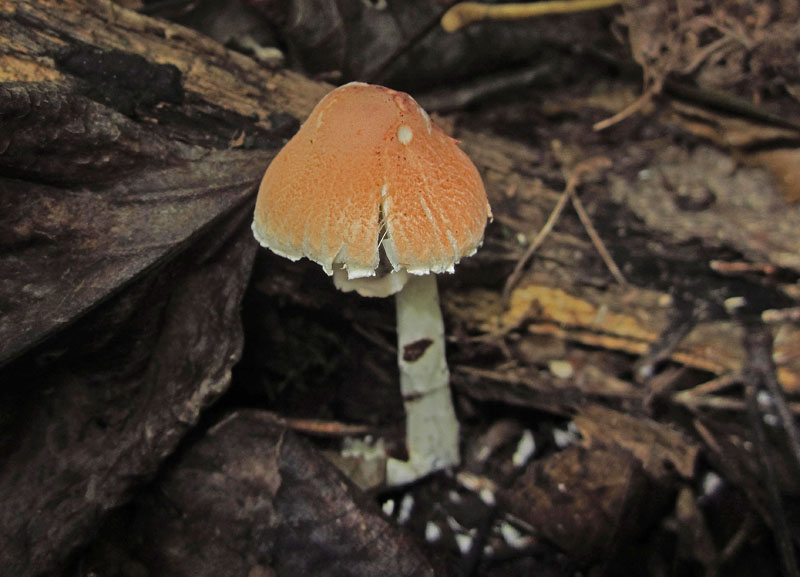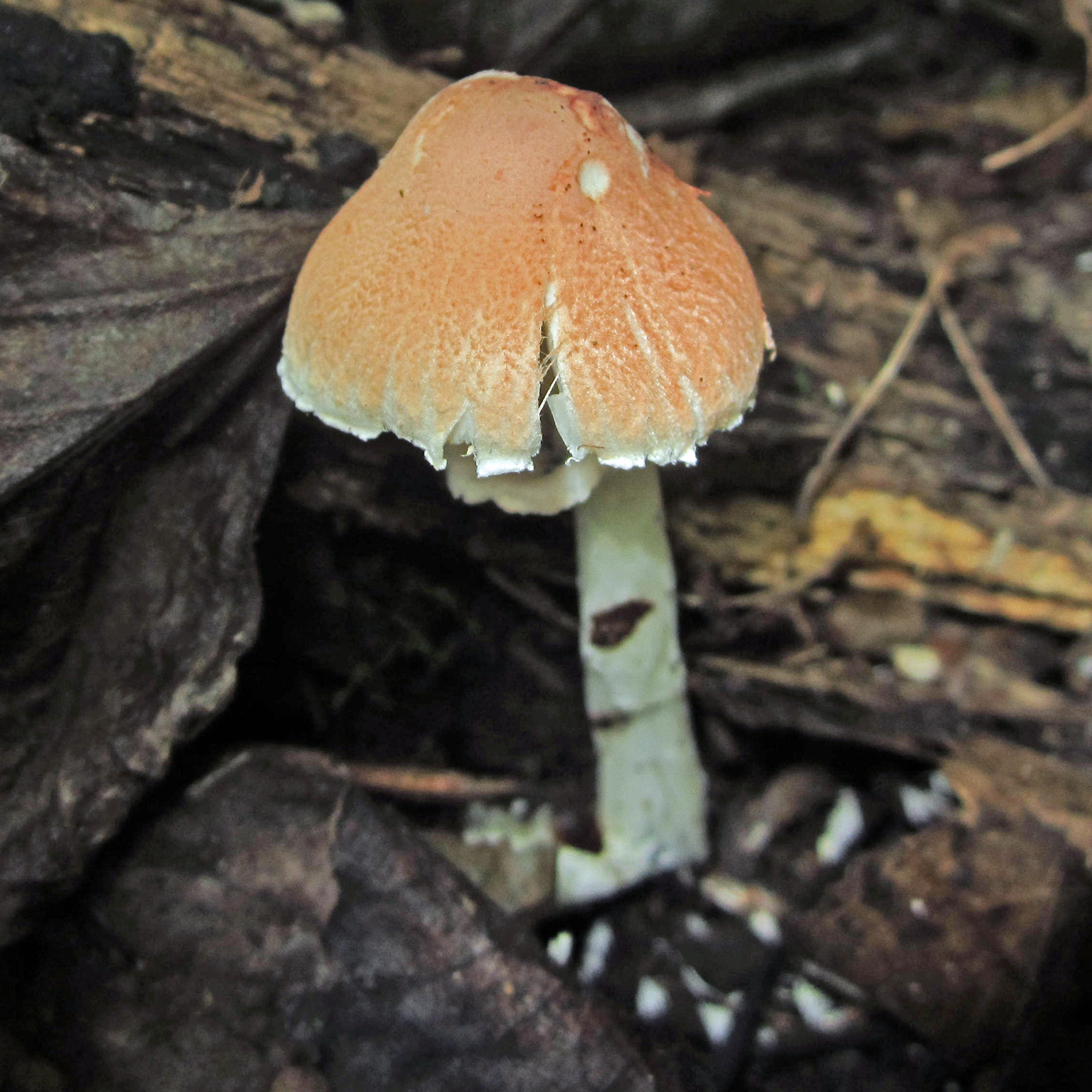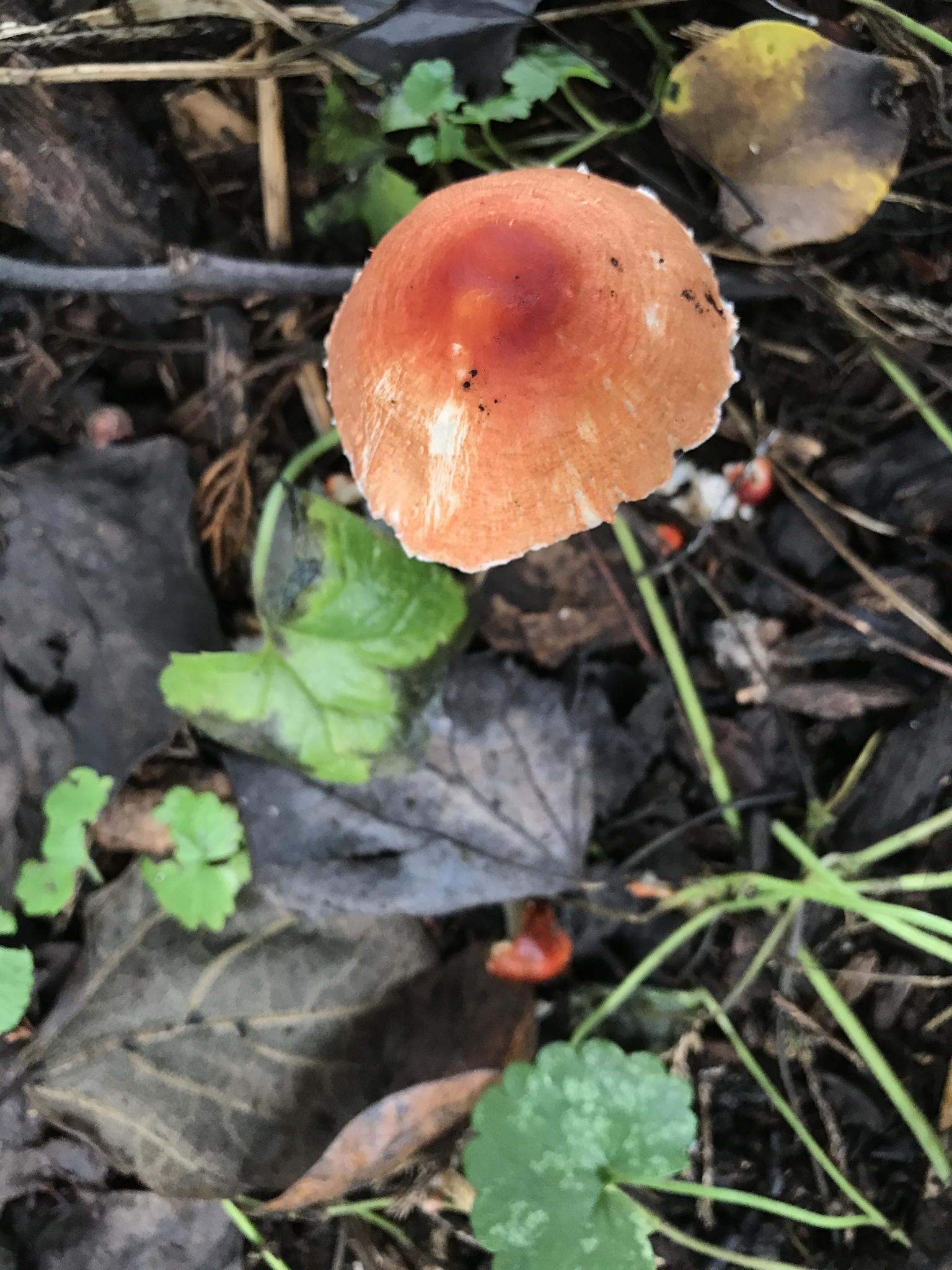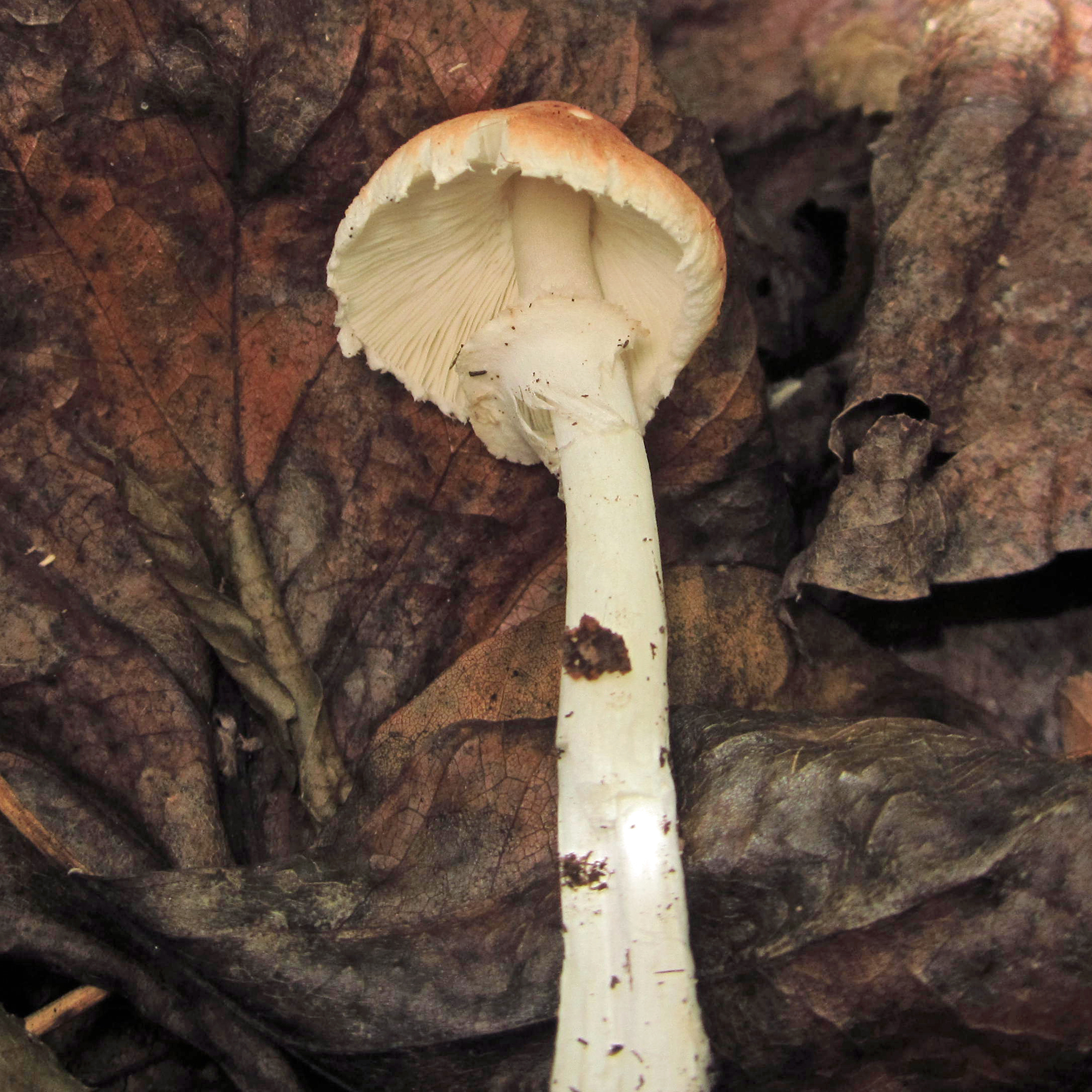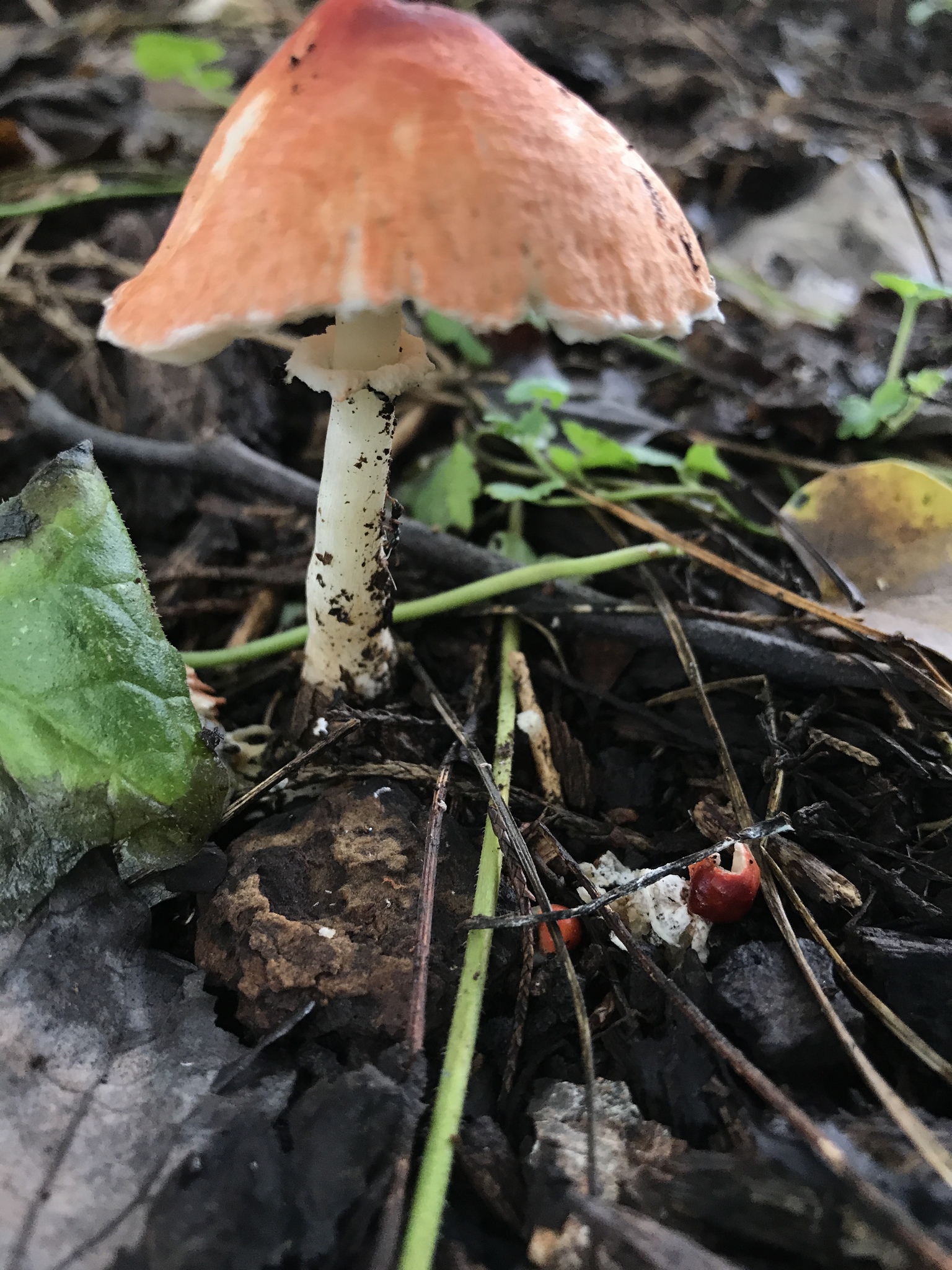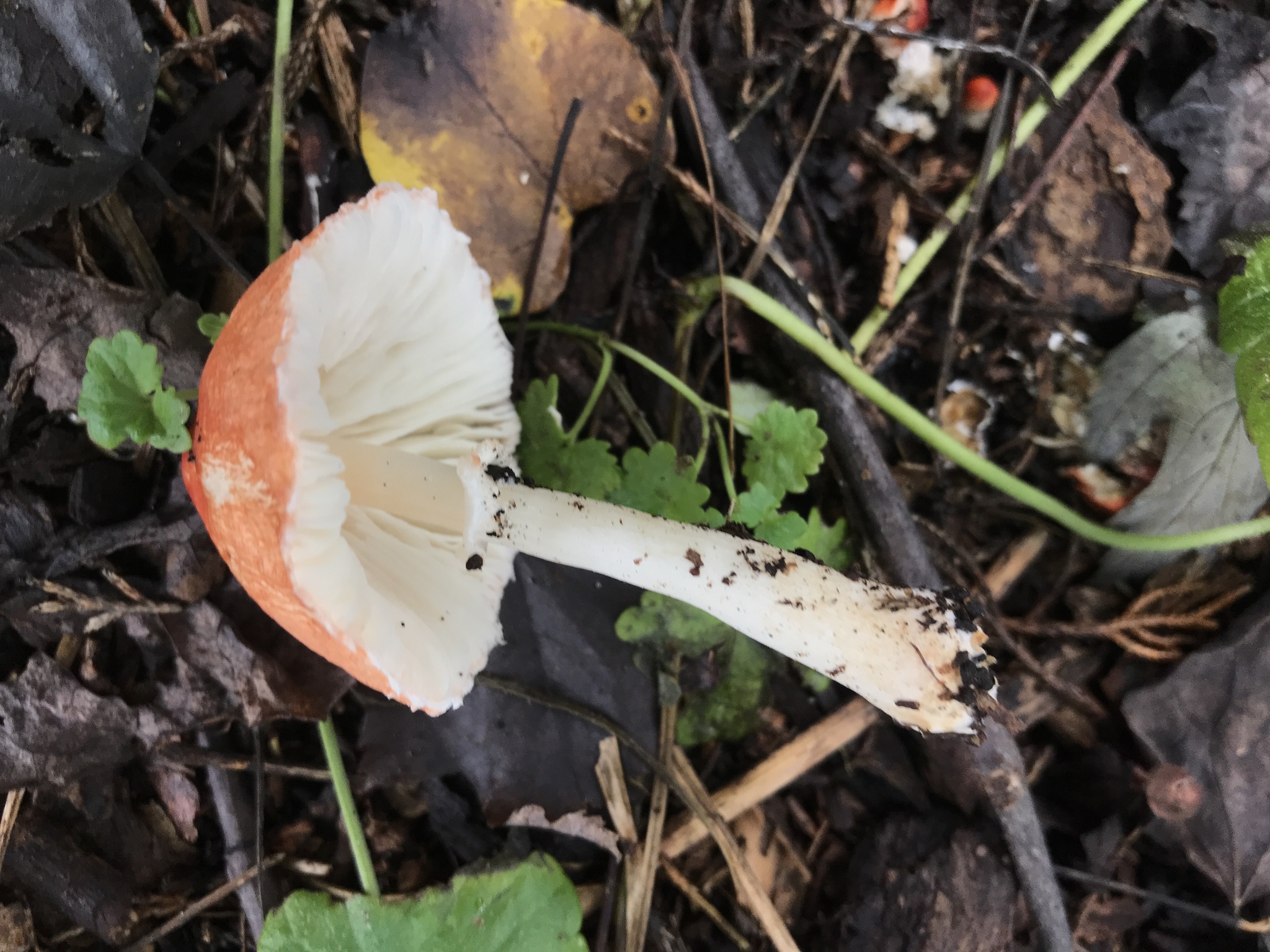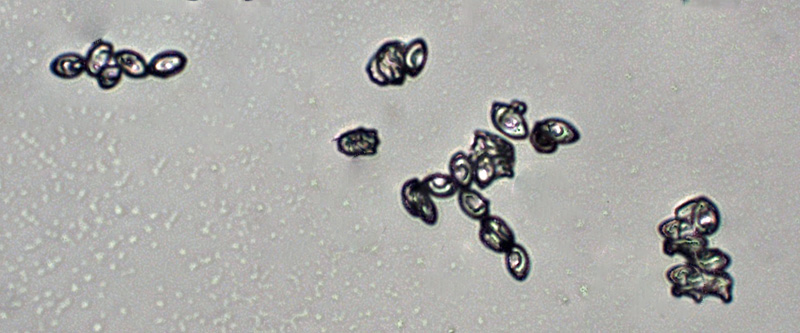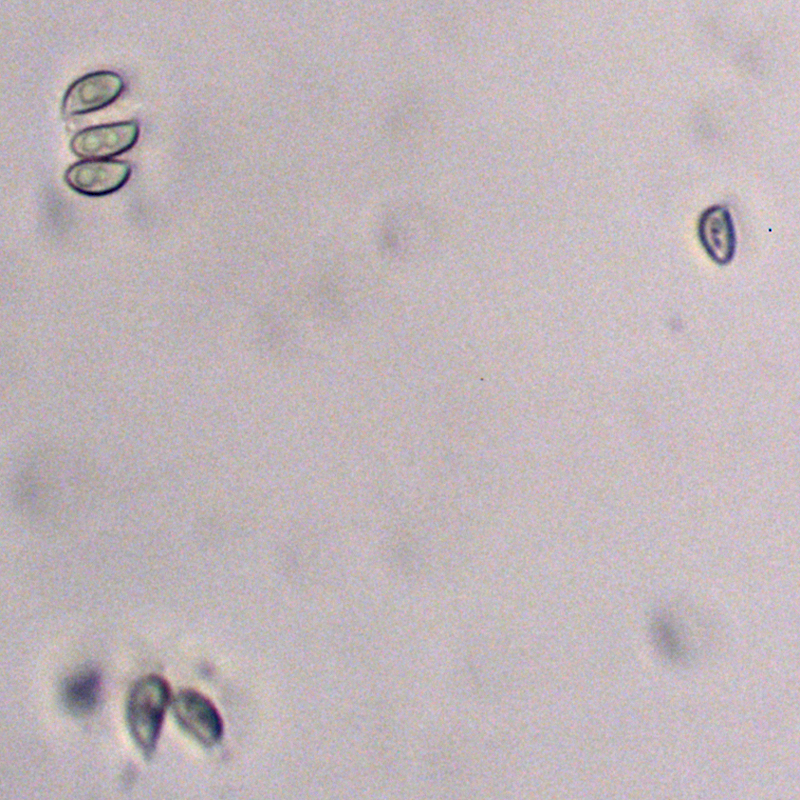Map Snapshot




11 Records
Status
Solitary or groups on ground, compost, or litter in hardwood forests.
Description
Cap: Red-orange to brownish-pink in age; rounded to flat with umbo in age; margin often cracked; smooth, dry; flesh white. Gills: White with no staining; close. Stalk: White; equal or tapers up; white membranous veil froms superior ring; hollow in age (J. Solem, pers. comm.).
Seasonality Snapshot
Source: Wikipedia
| Leucoagaricus rubrotinctus | |
|---|---|

| |
| Scientific classification | |
| Domain: | Eukaryota |
| Kingdom: | Fungi |
| Division: | Basidiomycota |
| Class: | Agaricomycetes |
| Order: | Agaricales |
| Family: | Agaricaceae |
| Genus: | Leucoagaricus |
| Species: | L. rubrotinctus
|
| Binomial name | |
| Leucoagaricus rubrotinctus | |
| Synonyms[1][2] | |
| |
Leucoagaricus rubrotinctus, commonly known as the red-eyed parasol,[3] is a widespread species of fungus in the family Agaricaceae. It was described as new to science in 1884 by American mycologist Charles Horton Peck as Agaricus rubrotinctus.[4] Rolf Singer transferred it to the genus Leucoagaricus in 1948.[5] The fungus may be a complex of several closely related species.[6] It is inedible.[7]
The cap is reddish brown and convex to flat.[2] The margin splits and causes lines of the whitish flesh to darken.[2] The gills are white and do not stain.[2] The stipe is whitish and enlarged at the base, with a fragile ring.[2]
References
[edit]- ^ "GSD Species Synonymy: Leucoagaricus rubrotinctus (Peck) Singer". Species Fungorum. CAB International. Retrieved 2015-01-30.
- ^ a b c d e Trudell, Steve; Ammirati, Joe (2009). Mushrooms of the Pacific Northwest. Timber Press Field Guides. Portland, OR: Timber Press. pp. 76–77. ISBN 978-0-88192-935-5.
- ^ Arora, David (1986). Mushrooms demystified: a comprehensive guide to the fleshy fungi (Second ed.). Berkeley: Ten Speed Press. ISBN 978-0-89815-169-5.
- ^ Peck CH. (1884). "Report of the Botanist (1882)". Annual Report on the New York State Museum of Natural History. 35: 125–64.
- ^ Singer R. (1948). "Diagnoses fungorum novorum Agaricalium". Sydowia. 2 (1–6): 26–42.
- ^ Roberts P, Evans S. (2014). The Book of Fungi: A Life-Size Guide to Six Hundred Species from around the World. University of Chicago Press. p. 668. ISBN 978-0-226-17719-9.
- ^ Phillips, Roger (2010). Mushrooms and Other Fungi of North America. Buffalo, NY: Firefly Books. p. 37. ISBN 978-1-55407-651-2.

